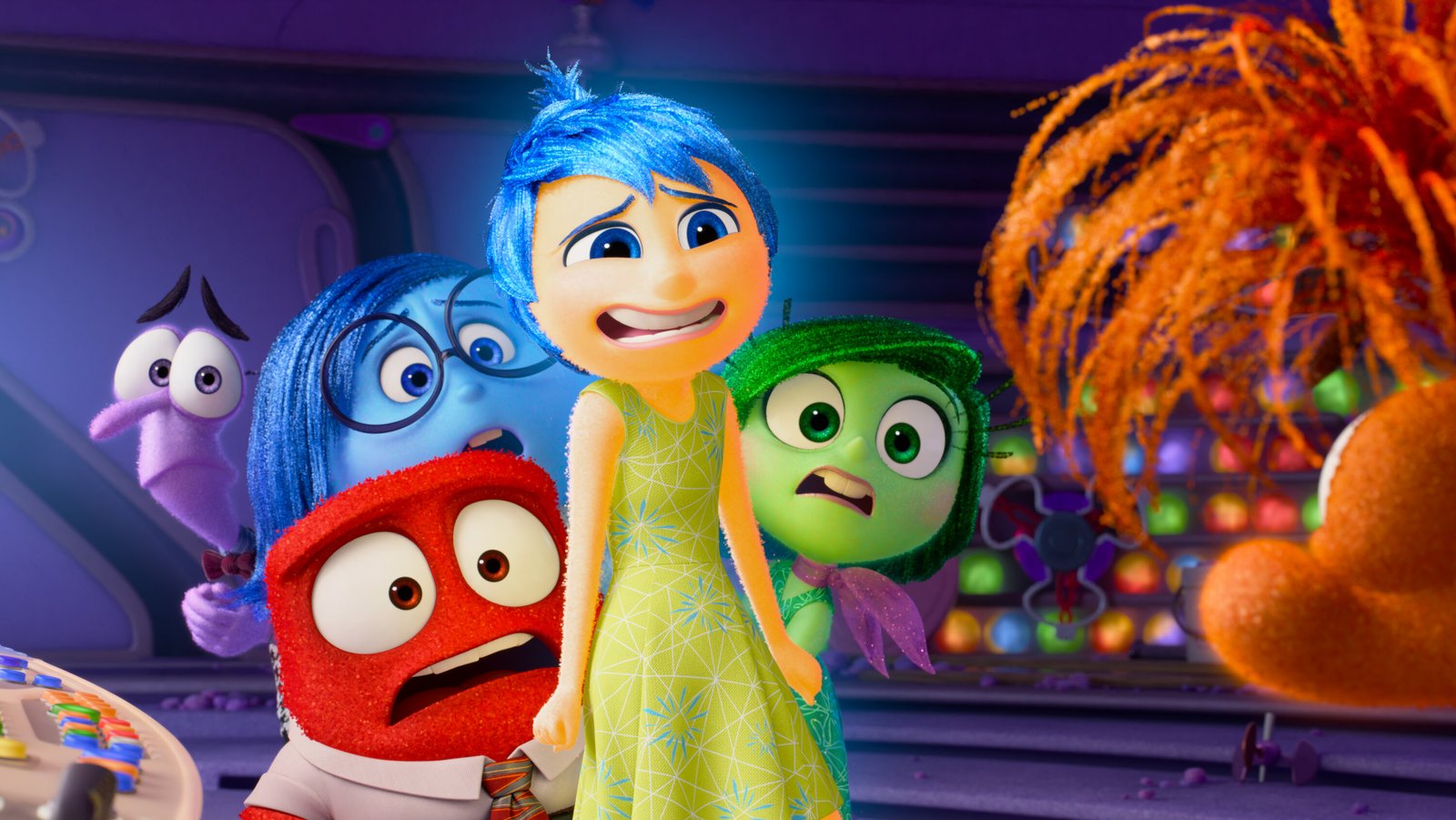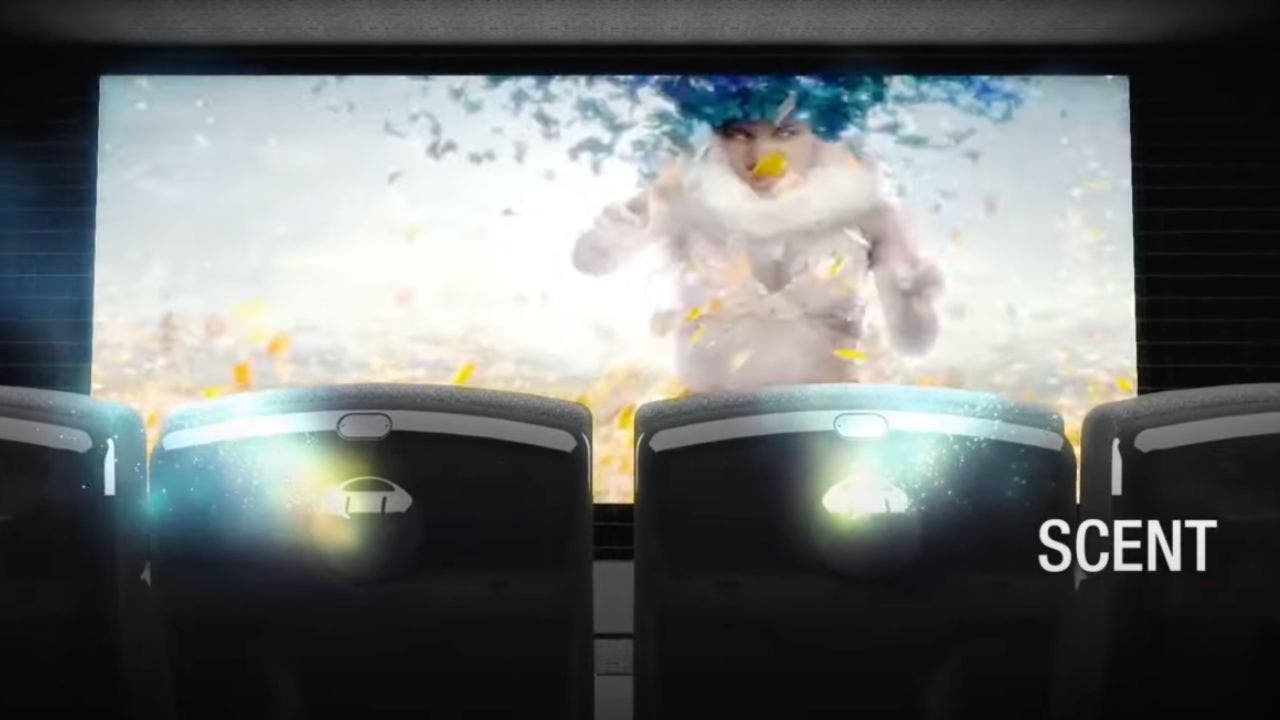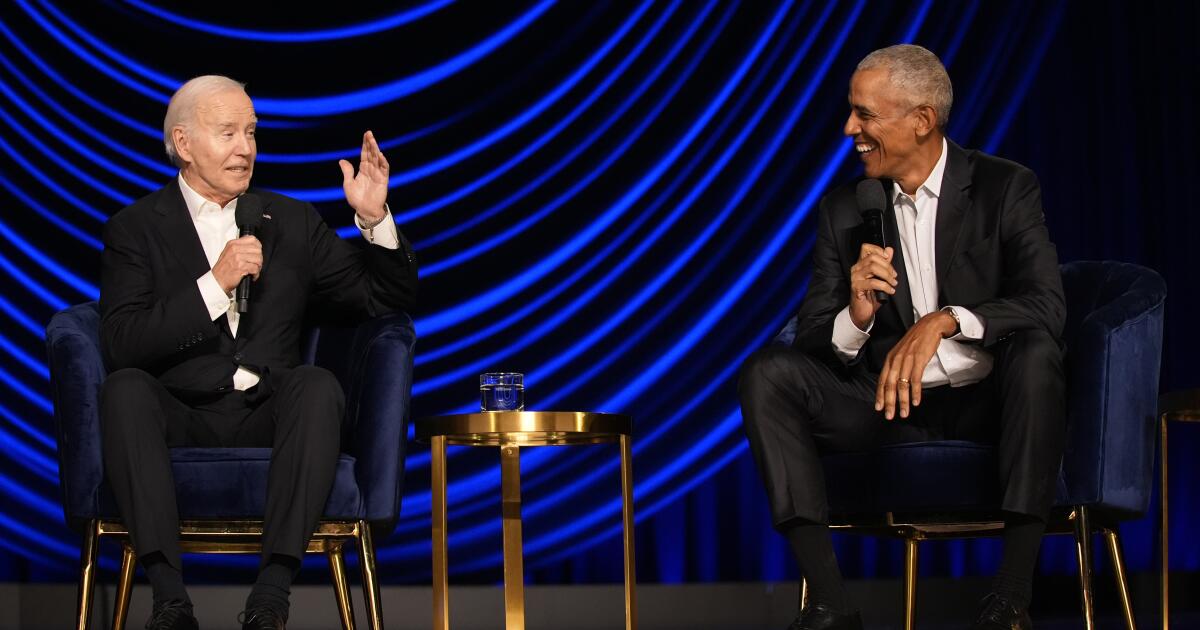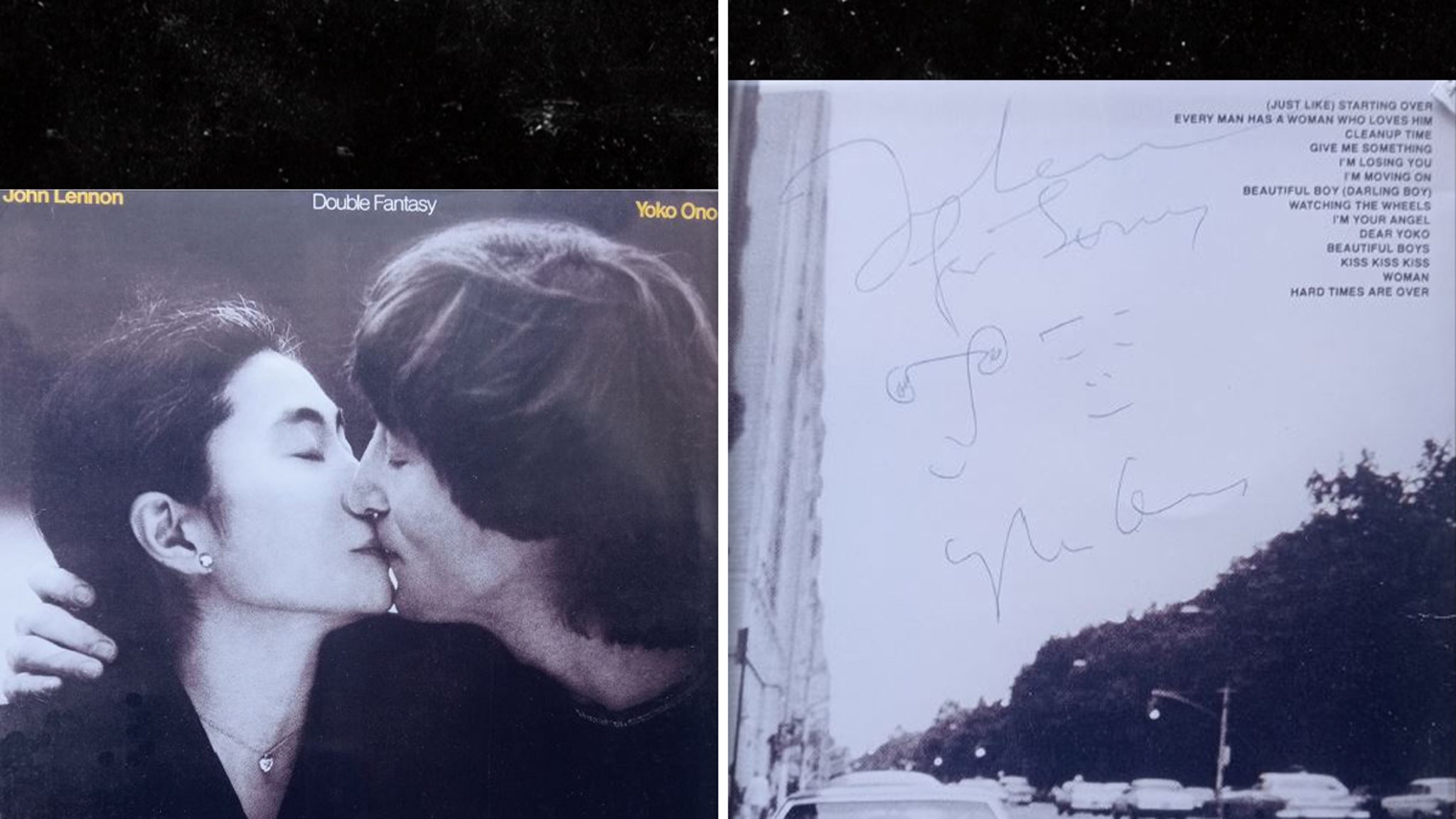Movie Reviews
Short Film Review: Karita (2023) by Virginia de Witt and Koji Ueda

“So I came here…”
Headed by actress-turned-director Virginia de Witt and Koji Ueda, a Kyoto-born Tokyo-based director, photographer, and filmmaker, “Karita” is a film inspired by the manga series “Nana”, while trying to answer the question, what if “Lost in Translation” was cast with the “Fleabag” character. The 17-minute short will be premiering at the Dances With Films Festival on June 22nd in Los Angeles.
The film begins with a series of impressive images from nighttime Tokyo, while the ominous music suggests that something dangerous is about to happen. The next scene has two women walking in the streets during the day, as Nico, an American, is shown around Tokyo by her friend
and supervisor at a local record store, Rumi. The camera is shaky and the cuts frantic, while there is a different dialogue heard in the background. The next, dominated by neon pink lights scene, brings us to the location the dialogue is taking place, inside a bar, where the two girls are talking to two boys and one girl, with Nico asking them if they have ever done anything dangerous. One of the boys, Ren, starts talking about people stealing cars. Nico shares her own experience in the US, which makes everyone in the table rather amused.
The night continues with a lot of drinking and eventually, Rumi decides to go home, cautioning her friend not to do anything stupid, before she goes. The next scene takes place in a garage with a sports car, which belongs to the uncle of the second of the boys in the company, Kenji. Suki, the other girl, who is quite drunk, insists they take the car for a drive, despite the yakuza-like uncle having specifically cautioned his nephew otherwise. In the end, with Ren in the driver’s seat, they take a drive around Tokyo.
Unfolding much like a road-movie/music video, “Karita” will definitely stand out due to its impressive visuals, with Koi Ueda’s cinematography, in combination with the impressive lighting and coloring, capturing night time Tokyo in the most impressive fashion. Curtis Anthony Williams’s frequently frantic editing also adds to this sense, while the rather fast pace definitely suits the overall aesthetics here.
At the same time, there is a part of the movie that is quite realistic as the group visit various locations, as a pier, a convenience store, the record store, and the aftermaths of getting drunk and doing stupid things is also highlighted. A pinch of humor, as in the whole concept of the uncle and Suki’s actions, and some notions of romance, cement the rather entertaining narrative here.
Virginia de Witt plays the foreigner that tries to appear cool in order to fit in with gusto, while Haruka Hirata as Rumi is quite convincing as the “cautious” friend, with the chemistry of the two also being on a very high level, presenting a rather kawaii relationship between them. The other actress that stands out here is Mika Ushiko, who is quite convincing as the drunk Suki.
As mentioned before though, the aspect that makes “Karita” stand out is definitely its production values, which are on a level very rarely met in short films, while being the main reason the movie definitely deserves a watch. All in all, a very appealing film, in an effort that intrigues on what the filmmakers could do with a bigger budget in their hands, that would allow them to explore the script and the characters more.

Movie Reviews
‘Under Paris’ movie review: A shark tale lost in confusion and plausibility

Under Paris begins with a pre-title sequence where a group of marine scientists are dangerously close to a man-eating shark. Unsurprisingly, all but one member of the team survives the vicious attack. The surviving scientist, Sophia (Berenice Bejo), goes on to live far away in Paris with memories of the traumatic incident where she lost her husband. The shark, named Lillith for some reason, finds her way to Sophia once again after conservation activist Mika (Léa Léviant) spots her in the Seine River with a tracker.
From this point, director Gens seems confused about whether the shark must be treated as a monster or pet. This dilemma, which persists for an hour of the film’s runtime, is rather frustrating to watch. By the time the film makes up its mind, it gets hard to root for the protagonist, especially since good old logic seems to take a hit too.
Add to the proceedings a smug mayor (Anne Marivin), who doesn’t want anything hampering the triathlon Olympics in Paris, leaving you wondering how the Parisian cops let a bunch of 20-year-old activists foil their covert operation? It’s possible, sure, but the film needs to sell it. Even as the number of underwater deaths begin mounting, the Parisians are strangely devoid of any panic. Further narrative issues come in the way of a screwball subplot involving the discovery of active World War II artillery under the Seine. The shark may be kept under wraps, but how is the mayor keeping this a secret? Again, it’s possible, but the film does not attempt whatsoever to convince the audience of the plausibility of the premise.
Movie Reviews
“Inside Out 2” is Good, but is that Good Enough? (Movie Review)

When it was released in 2015, Pete Docter’s “Inside Out” was a seminal moment for Pixar. Coming on the heels of a pair of films that didn’t connect with audiences or critics in the same way that much of the studio’s earlier work had (2012’s “Brave” and 2013’s “Monsters University”), “Inside Out” saw Pixar out to prove they still had it. And as it turned out, they absolutely did.
After some decidedly unflattering discourse discussing the studio’s new penchant for favoring sequels and prequels over original material, “Inside Out” was an original film that hit every possible benchmark for success: it became one of the best-reviewed films Pixar had ever made, grossed just shy of a billion dollars, and won an Oscar. “Inside Out” is a truly stunning film, one that builds upon a bedrock of remarkably nuanced emotional intelligence to deliver an animated feature just as engaging philosophically as it is as a piece of entertainment.
Now, in 2024, Pixar is in a very different position. Despite the fact that the overwhelming majority of Pixar’s recent output has been incredibly well-received original films, these films have not been released in theaters. This is partially due to COVID-related lockdowns and partially due to Disney’s insistence on betting every chip possible on their streaming service, Disney+. As a result, films like “Soul,” “Luca,” and “Turning Red” (all of which are absolutely wonderful and unique works that deserve to be acknowledged as modern classics within the Pixar oeuvre) were not released in theaters and in their place, the aggressively lackluster films “Lightyear” and “Elemental” were. Thus, Pixar has been pushed back into a very similar corner, one in which their artistic and commercial viability has been questioned from every side, including parent-company Disney most of all.
So Kelsey Mann’s “Inside Out 2” finds itself being released to a scrutinizing media environment, trying to hit every possible quadrant for success once more, just like its predecessor. But does “Inside Out 2” have what it takes to live up to the critical, commercial, and cultural juggernaut that was the first film?
5. Weak Spot: Commodity Over Character
One of the first things to strike this writer as strange in the lead-up to “Inside Out 2” was the lack of returning creatives, both in front of and behind the digital camera. While Amy Poehler is back, as are several others, there are numerous highly notable absences that one does not typically see in Pixar sequels. Neither Bill Hader nor Mindy Kaling have returned to their roles of Fear or Disgust, respectively, and even composer Michael Giacchino, whose score for the first film has become so indelibly ingrained in the minds and memories of audiences, is woefully missing here.
This is all strange, given the lengths Pixar has gone to actively preserve these kinds of creative teams in the past. All four Toy Story films have kept the core voice cast involved as much as possible, and you don’t see Randy Newman not returning to score one of those sequels. In and of itself, this observation is not a problem, but it’s indicative of a larger systemic issue. “Inside Out” was a film about characters, and “Inside Out 2” flattens those characters into commodities in practically every way.
Part of this has to do with the sheer number of characters in “Inside Out 2.” By introducing four new Emotions to the cast, “Inside Out 2” is a far more crowded film, one that feels ultimately unable to devote worthwhile time to properly defining or developing its characters.
As an easy example, in “Inside Out,” Bill Hader as Fear felt like a real character. We spent meaningful time with him, both with the rest of the Emotions and in solidarity, and came to understand his role within Riley’s emotional state on many levels. In “Inside Out 2,” Fear is a caricature of Hader’s original performance. New voice actor Tony Hale does a great job, but the character himself is defined by the broadest strokes imaginable here, and it’s to the overall detriment of the character and the film. In juggling so many more characters and moving pieces, “Inside Out 2” loses the stark clarity, focus, and impact of the first film and muddies the central metaphor at the series’ core.
4. Maya Hawke as Anxiety
The one new emotion who truly shines in “Inside Out 2” is Anxiety, voiced delightfully by Maya Hawke.
Without delving too deeply into specifics to preserve some of the film’s later surprises, Anxiety’s role in the story stands out as a highlight where the emotional intelligence of “Inside Out 2” matches that of the first film. The portrayal of Anxiety manages to convey with genuine subtlety and nuance the ways in which anxiety can impact someone, especially during adolescence.
Maya Hawke’s vocal performance is exceptional, effectively capturing the complexities of Anxiety’s motivations. Supported by the strong writing of the character in Meg LeFauve & Dave Holstein’s script and stunning animation, Anxiety emerges as one of the most skillfully crafted and impactful elements of “Inside Out 2.”
3. Weak Spot: Maintaining the Status Quo
There are several instances throughout the runtime of “Inside Out 2” where it feels like the filmmakers are yearning to break free from the confines of delivering ‘another Inside Out’ and instead offer something beyond that preconceived notion. Throughout the film, concepts such as Riley driving herself without the influence of any Emotions, delving into the emotions that constitute the Emotions themselves, and exploring how one’s primary emotions evolve over time are all hinted at. However, disappointingly, none of these ideas are explored with any real depth.
Instead, “Inside Out 2” appears determined to cling to the status quo established by its predecessor, often to its own detriment. While these ideas suggest potential avenues for a transformative story involving Riley and her emotions, the film fails to fully realize any of them. Instead, the overarching theme of the film feels like a slight variation on the deeper theme of the first film. Similarly, the narrative of “Inside Out 2” feels deliberately reminiscent of its predecessor, lacking the imagination in staging, settings, or character development that made the original so memorable.
2. Weak Spot: A Lack of Imagination
The first “Inside Out” feels bursting with creativity, imagination, and monumental stakes. While the external story is simply about Riley and her family moving to a new city and her contemplating running away from home, the narrative feels almost mythic due to the meticulous interweaving of a propulsive narrative and profound themes by Docter and his team.
In contrast, “Inside Out 2” often feels oddly insular and small-scale in the wrong ways. While using a weekend away at hockey camp as the narrative’s core is not a bad idea, as it serves as a microcosm of Riley’s impending adolescence, the film fails to emotionally convey the magnitude of this event as effectively as it does intellectually.
This is exacerbated by an in-brain adventure for the Emotions that feels more like a straightforward task than the grand odyssey of the first film. While the first film also revolved around retrieving a MacGuffin, it did so to facilitate character growth and thematic exploration. In “Inside Out 2,” this narrative structure remains, but the essential components feel far more scarce and less impactful.
1. The Vault
The true standout scene of “Inside Out 2” revolves around a vault within Riley’s head dedicated to safeguarding her secrets. Within this vault lies a plethora of hilariously clever gags, including a recurring one that parents of very young children will undoubtedly find immensely enjoyable. What sets this sequence apart is its utilization of a mixed-media style of animation, which deviates from Pixar’s typical aesthetic in unexpected ways, enhancing the scene’s impact. There’s a genuine exuberance and innovative energy to this moment, which the film could have benefited from incorporating more extensively.
(B-)
“Inside Out 2” is a very well-made film. It’s funny, charming, and compelling, but it doesn’t quite reach the same level of humor, charm, and emotional resonance as the first “Inside Out” film. While it represents an improvement over Pixar’s previous theatrical releases, “Lightyear” and “Elemental,” it falls short of the artistic fulfillment and singular vision found in recent works like “Soul” by Pete Docter and Kemp Powers, “Luca” by Enrico Casarosa, and “Turning Red” by Domee Shi.
Although “Inside Out 2” isn’t a disaster, it feels like a movie that prioritizes mass appeal and accessibility over passionate storytelling and creative vision at every turn.
Movie Reviews
'Inside Out 2' movie review: Featuring the feels, their feats and then some

Nearly 10 years after the first instalment, out of the classic Pixar-Disney partnership, comes a peek into the life of a teenage Riley in the sequel to Inside Out. Much like its predecessor, the movie is intense, uplifting and, understandably, emotional.
The introduction of new characters — emotions and beyond — succeeds in keeping the audience guessing. True to form, the script and animation hold several inside jokes and lean heavily on wordplay. Amidst the dry, chuckle-drawing humour, the writers have also managed to pepper in more complex concepts. This imagery is likely to stick with you after the viewing, drawing reflections from the outside in, ironically.
Even in the innovation and progressing timeline, there is definitely a sense of familiarity. Characters navigate the mind landscape, and make an arduous journey with obstacle after obstacle, which sometimes does seem to drag on.
The voice cast powers this delicate script forward with noticeable nuance, despite some replacements and additions. Amy Poehler continues to be a convincing (and this time, a more likeable) Joy, while Maya Hawke’s Anxiety carries a nervous and excited energy central to the story.
The actors also manage to keep pace with the development of their characters into more multi-dimensional personalities. For those who enjoyed, related to and fondly remember the characters from the first film, the second offers great story arcs to love, alongside new fun introductions.
While Pixar’s bright, lively animation will work great to keep younger audiences entertained, depictions of mental health — particularly a panic attack — might warrant a conversation, context and maybe some reassurance for kids and teens. For older audiences, the movie can come off like one long session of therapy — loads of self-reflection, uncertainty, tears, awareness and hopefully, acceptance.
The story peels back the layers of the confusion, hopefulness and embarrassment of the teen years in a way that feels uncomfortable at times, and profound at others.
In all, Inside Out 2, holds tears, laughs and a slew of, “Oh, I see what you did there”. While it isn’t the most gripping watch throughout, it is thoughtful and sweet, making the film a lovely choice for a quiet day with family or friends. My top tip is to make sure you stick around for the post-credits scene (there’s more than one)!
Published 15 June 2024, 09:56 IST
-

 News1 week ago
News1 week agoIsrael used a U.S.-made bomb in a deadly U.N. school strike in Gaza
-

 Movie Reviews1 week ago
Movie Reviews1 week agoShort Film Review: Blue and White (2022) by Hiroyuki Nishiyama
-

 World1 week ago
World1 week agoFrance to provide Ukraine with its Mirage combat aircraft
-

 World1 week ago
World1 week agoWorld leaders, veterans mark D-Day’s 80th anniversary in France
-

 World1 week ago
World1 week agoRussia-Ukraine war: List of key events, day 833
-

 News1 week ago
News1 week agoNonprofit CFO Accused of 'Simply Astonishing' Fraud
-

 Movie Reviews1 week ago
Movie Reviews1 week agoInsane Like Me? – Review | Vampire Horror Movie | Heaven of Horror
-

 Politics1 week ago
Politics1 week agoGeorge Clooney called White House to complain about Biden’s criticism of ICC and defend wife’s work: report














